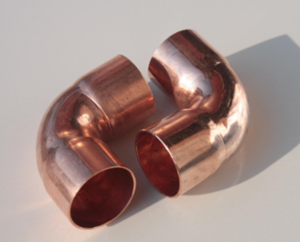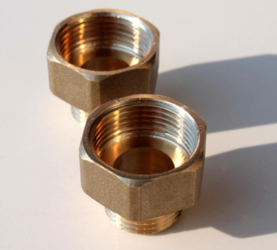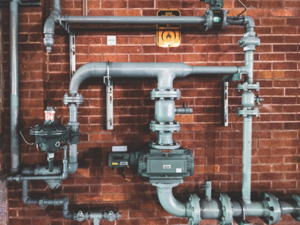How to choose the perfect pipes for your needs?
Pipe fittings in the UAE are in high demand for pipe and plumbing systems used in industrial and commercial settings. Fittings enable pipes to be connected or put in the proper location and terminated or closed as required. They are crucial components of plumbing and piping systems. Each kind of pipe or tube needs its unique fitting, yet most pipe fittings have similar characteristics. Pipe fittings suppliers are easily available and you can look through our directory where we have listed the pipe fittings supplier.
Types of Pipe Fittings and Their Functions

1. Elbows: These pipe fittings are used to alter the flow direction. Elbows as a result of their use in plumbing are primarily available at two basic angles: 90 and 45 degrees. The 90-degree elbow is typically used to connect hoses to
water pumps,
valves, and deck drains, whereas the 45-degree elbow is utilized primarily in water supply facilities,
electronic and chemical industrial pipeline networks, food,
air-conditioning pipelines, garden production, agriculture, and
solar-energy facilities.
Available in the following materials: Acrylonitrile Butadiene Styrene (ABS plastic), polyvinyl chloride (PVC), chrome-plated brass, chlorinated polyvinyl chloride (CPVC),
stainless steel, malleable (galvanized and black), and copper.
2. Couplings: Couplings are pipe fittings used to prevent leaks. Pipes that are broken or damaged need couplings. The connecting pipes should have the same diameter. Regular couplings and slip couplings are the two types of couplings used in plumbing. With the assistance of rubber seals or gaskets on both sides, a standard connection is installed between the two pipes to prevent additional leaks. The slip coupling itself has two pipes that can be used to replace the broken long pipes.
Available in the following materials: ABS, brass, copper, chrome-plated brass, CPVC, PVC, malleable (galvanized and black), and stainless steel.
3. Union: This form of pipe fitting is almost identical to coupling in terms of its functions, with the exception that a union can be removed at any moment whereas a coupling cannot. To prevent galvanic corrosion between pipes composed of various materials, a variety of dielectric unions are used. These pipe fittings have a nut, as well as female and male threaded ends.
They are available in the following materials: brass, copper, chrome-plated brass, malleable (galvanized and black), PVC, CPVC, and stainless steel.
4. Adapters: Adapters are added to pipes to make them longer or to give appropriate ends when they don't have them. This enables the connection of dissimilar pipes without the need for substantial preparation. They are typically used for PVC and copper pipes.
They are available in the following materials: ABS, CPVC, copper, malleable (galvanized and black), PVC, brass, and stainless steel.
5. Nipple: A short butt of a pipe used to join two other fittings with male threads. Close nipples are a kind of pipe fitting that include continuous threading. They are used mostly in hoses and pipes.
They are available in the following materials: brass, brass with a chrome finish, malleable (galvanized and black), PVC, copper, and stainless steel.
6. Reducer: This pipe configuration is used to lower the flow size of a larger pipe to a smaller one. There are two different types of reducers: concentric and eccentric. Reducer, the former is shaped like a cone and is used to gradually reduce the diameter of the pipe. The latter has one edge towards the opening of the connecting pipe, decreasing the likelihood of air collection.
7. Tee: This T-shaped pipe fitting is utilized in the plumbing system and has one inlet and two exits at a 90-degree angle to the main pipe. This kind of fitting is used to join two pipes with a single flow direction. If all three sides of this fitting are the same size, it is known as an equal tee; otherwise, it is known as an unequal tee.
It is available in the following materials: ABS, copper, CPVC, PVC, brass, chrome-plated brass, malleable (galvanized and black), and stainless steel
8. Cross: This style of pipe fitting has cross-four apertures in all four primary directions. This fitting connects four pipes that meet at a common location. There is either one intake and three exits, or vice versa, for liquids to flow in four directions. These sorts of pipe fittings are often used in the installation of fire sprinkler systems.
It is available in the following materials: PVC, brass, malleable (galvanized and black), and stainless steel.
9. Flanges: A
flange is a pipe fitting used to join pipes,
pumps, valves, and other components to create a complete piping system. They provide the capability of checking or cleaning the whole system from the inside. They are attached to the pipes by welding, threading, or screwing, and then are sealed with bolts. They are used for household pump systems and most industrial applications.
Available in the following materials: brass, copper, malleable (galvanized and black), and PVC.
10. Caps & Plugs: Both of these pipe fittings are used to shut the ends of the pipe, either temporarily or permanently. The plugs are threaded and installed within the pipe to preserve the pipe for future usage. Depending on the material of the pipe, a cap can be attached to it in a variety of methods, some of which include soldering, gluing, or threading.
They are available in the following materials: ABS, brass, copper, chrome-plated brass, malleable (galvanized and black), CPVC, PVC, and stainless steel.
11. Bushings: These pipe fittings are used to join pipes of different sizes together by reducing the size of the larger fitting to the size of the smaller pipe. Unlike unions or couplings used for the same function, bushings are not typically screwed inside out and need much less space.
They are available in the following materials: ABS, chrome-plated brass, copper, brass, CPVC, PVC, stainless steel, and malleable metal (galvanized and black).
12. Wyes: These types of pipe fittings are used in drainage systems and have Wyes, which are branch lines that are angled at 45 degrees to maintain a smooth flow of water through the system. When
sanitary tees fail to function in a horizontal connection, a wye is required.
They are available in the following materials: brass, ABS, and PVC.
13. Valves: Valves block the passage of gases or liquids in a plumbing system. Three categories that exist are throttling, isolation, and non-return. The isolation valves are used to temporarily divide a portion of the pipe system for maintenance or repair purposes. The throttling valves are used to control how much pressure a liquid has in a pipe. They are also strong enough to handle the stress that this causes.
14. Barb: Barb A barb is another essential pipe fitting that connects flexible tubing to pipes in a plumbing system. One end is male-threaded and attaches to female threads, while the other end has single or multiple barbed tubes that are inserted into the flexible tubing.
They are available in the following materials: brass for use with hot water and plastic for cold water applications.
15. Diverter tee: This kind of tee-shaped pipe fitting is often used in pressurized hydronic heating systems to divert a portion of the flow from the main line to a side branch linked to a heat exchanger.
16. Olet: These fittings are used when the regular size of the fittings is insufficient.
How do pipe fittings and pipes connect?

There are two types of pipe fittings: male and female. Female threads are on the inside of threaded pipe fittings, whereas male threads are on the outside. Street fittings are pipe fittings with one female end and one male end. Pipe fittings are used in two ways to join pipes or tubes:
By threading: To connect or join, threaded pipes screw together. Generally, metal pipes are threaded and their fittings are also threaded.
Slip-fit pipes use sleeves that slide into one another. The plastic pipes may be threaded or slip-fit.
Pipe fittings are thus arranged as follows:
- Male threaded: Threads on the outside. Internal threading is screwed into the interior of a bigger diameter pipe end
- Female threaded: The threads on the inside. Receive pipe fittings with male threads
- Male slip fit: There are no threads.
- Female slip fit: There are no threads on this slip-on female style, designed to fit a slightly bigger male sleeve
what a pipe fitting is for:
The fundamental functions of a pipe fitting are as follows:
- Joining two or more pipe or tube bores
- Joining pipe parts together
- Joining a pipe to a separate piece of equipment
- Changing the flow direction of a fluid or liquid
- Maintaining or controlling the flow
- Closing and sealing a pipe

Fittings for Pipes Based on Their Uses:
Pipe fittings can be characterized as follows based on the functions they perform:
- Pipe fittings for extending or concluding pipe runs: Examples include couplings, adapters, unions, caps, and plugs
- Direction-changing pipe fittings: For instance, elbows
- Connecting fittings for two or more pipes: Such as tees, cross, side-inlet elbows, and wyes
- Pipe adapters for changing pipe size, examples include reducers, bushings, and couplings
- Pipe fittings for controlling or regulating flow: For example, valves
- Pipe fitting equipment, such as pipe fasteners
- Pipe flanges
There are several prominent pipe fitting suppliers in the UAE. They meet the needs of a large number of clients in different parts of the world. They regard customers as partners by delivering high-quality goods and services.
Depending on the needs of the clients, these manufacturers produce pipe fittings in a variety of sizes, forms, and standards. Pipe fittings kinds include pipe fittings cross, pipe fittings reducer, pipe fittings tee, and pipe fittings elbow, among others.


